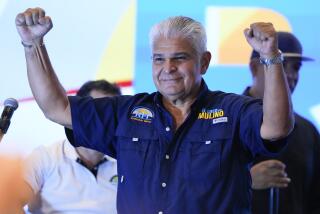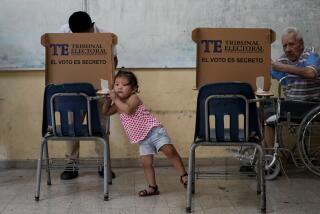BACKGROUND
- Share via
Ever since the late Arnulfo Arias Madrid, Panama’s last honestly elected president, was deposed by the old National Guard in October, 1968, civilian government in that country has functioned as a facade for military rule. A so-called National Assembly of Representatives, a body of 510 elected community delegates, drafted a new constitution in 1972 and named a civilian to be president. But it gave dictatorial powers to Gen. Omar Torrijos, the National Guard officer who had emerged as the nation’s ruler after the 1968 coup. Torrijos was killed in an aviation accident in 1981. Two years later, Torrijos’ chief of intelligence, Manuel A. Noriega, became commander of the National Guard--by then renamed the Panama Defense Forces--and effective ruler of Panama. So-called democracy under the 1972 constitution was restored in 1984 with the election of a civilian president and a 67-member unicameral Legislative Assembly in tainted balloting. But Noriega remained the boss, ousting every civilian president who crossed him and reducing the Legislative Assembly to a rubber-stamp function. When last May’s elections appeared likely to give Noriega’s foes the presidency and significant influence in the Legislative Assembly, the dictator annulled the elections. Last month, Noriega sought to give his rule constitutional legitimacy by reviving the old National Assembly of Representatives (sometimes called the People’s Assembly in Panama). That body made Noriega its president Nov. 22, and on Dec. 15, it proclaimed him “head of government” of Panama and declared Panama to be “in a state of war” with the United States.
More to Read
Sign up for Essential California
The most important California stories and recommendations in your inbox every morning.
You may occasionally receive promotional content from the Los Angeles Times.













